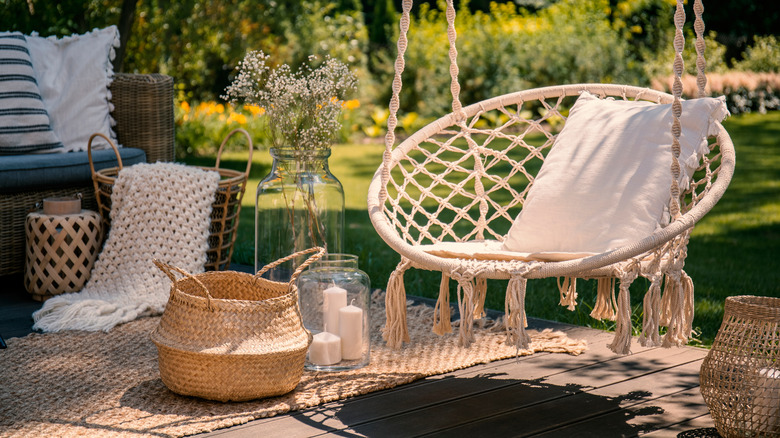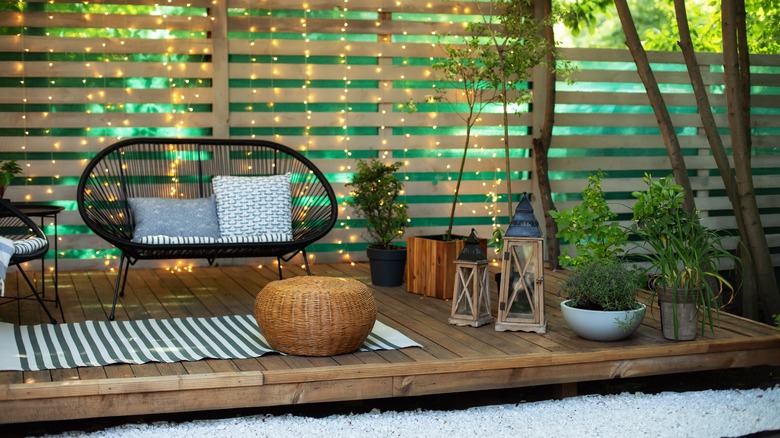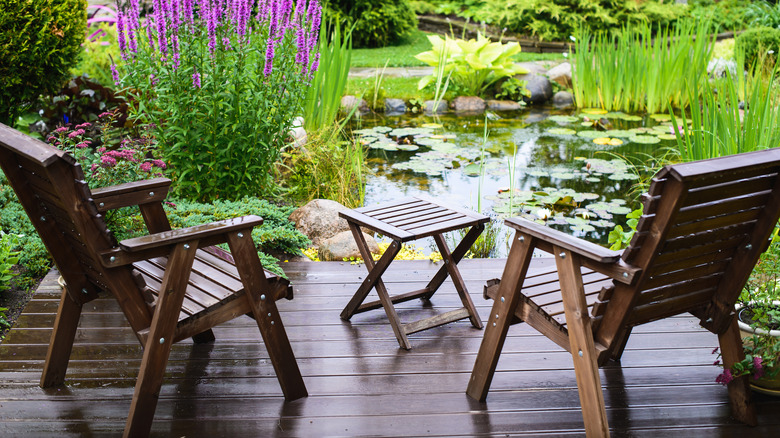Should You Install A Floating Deck In Your Yard?
Floating decks exist on their own without support from an attached structure, such as a house or garage. They are a perfect solution in many yards where attached decking is not possible or is simply less than ideal. If you do have an attached deck, a floating deck extension can work as an excellent accompaniment, providing another level of additional space for seating and dining.
The great thing about floating decks is that they often require less complicated engineering and materials. Depending on construction regulations where you live, they usually do not require the building permits one might need to obtain for non-freestanding structures. While they do require some initial considerations of drainage and leveling, they tend to be relatively simple to build.
According to Ugly Duckling House, floating decks can be built by constructing a wood frame on top of concrete blocks just about anywhere in the yard, making them temporary and moveable for flexibility. For more permanent builds, they can be constructed atop sunken cement pilings. Floating decks are an excellent alternative for renters who might not be able to alter an existing home's structure. In this case, they could even take their deck with them when they go!
Why a floating deck?
In addition to being easy to construct and portable, floating decks can also be a practical solution to some of the most common problems when configuring the overall design of your outdoor space. If your home did not originally feature a deck or patio, for instance, it likely lacks the proper layout or door placement that facilitates easy access to an attached deck. A floating deck can be placed anywhere in the yard and accessed from all directions.
Pretty Passive makes the case for a floating deck as a functional solution to hilly, muddy, or shady areas that have trouble growing grass or ground covers. For these unsightly spots, installing this type of decking immediately creates a flat durable surface that raises you up and out of the muck.
In fact, floating decks are perfect for anywhere you need a raised surface for outdoor seating arrangements and dining tables. Install a deck along a fence, add benches and chairs, and you'll instantly have a framed and intimate seating option in an area of the yard that might not otherwise be used at all. Before you know it, you'll be using your level, dry, dew-free surface for backyard camping exploits and more.
Where to add a floating deck?
If your backyard is on the small side, consider placing your deck at the rear of the property. The raised platform will direct the eyes up off the ground, giving the illusion of more space. This is an excellent way to make use of that unused back area and make the entire yard seem wider and deeper.
Floating decks can be used to highlight other areas of your yard and enjoy them more fully. How about a floating nook for reading a book and sipping iced tea under your favorite shade tree in an otherwise hot sunny backyard? A small decked seating area near a pond offers a slightly raised vantage point for the soothing water feature. Consider a floating deck around a stone fire pit, via Woodland Direct, or in a corner of your garden for your own private lounge chair retreat. Floating decks also make a great base on which to erect an arbor or trellis with climbing plants and twinkle lights for a stunning backyard dance floor under the stars.


